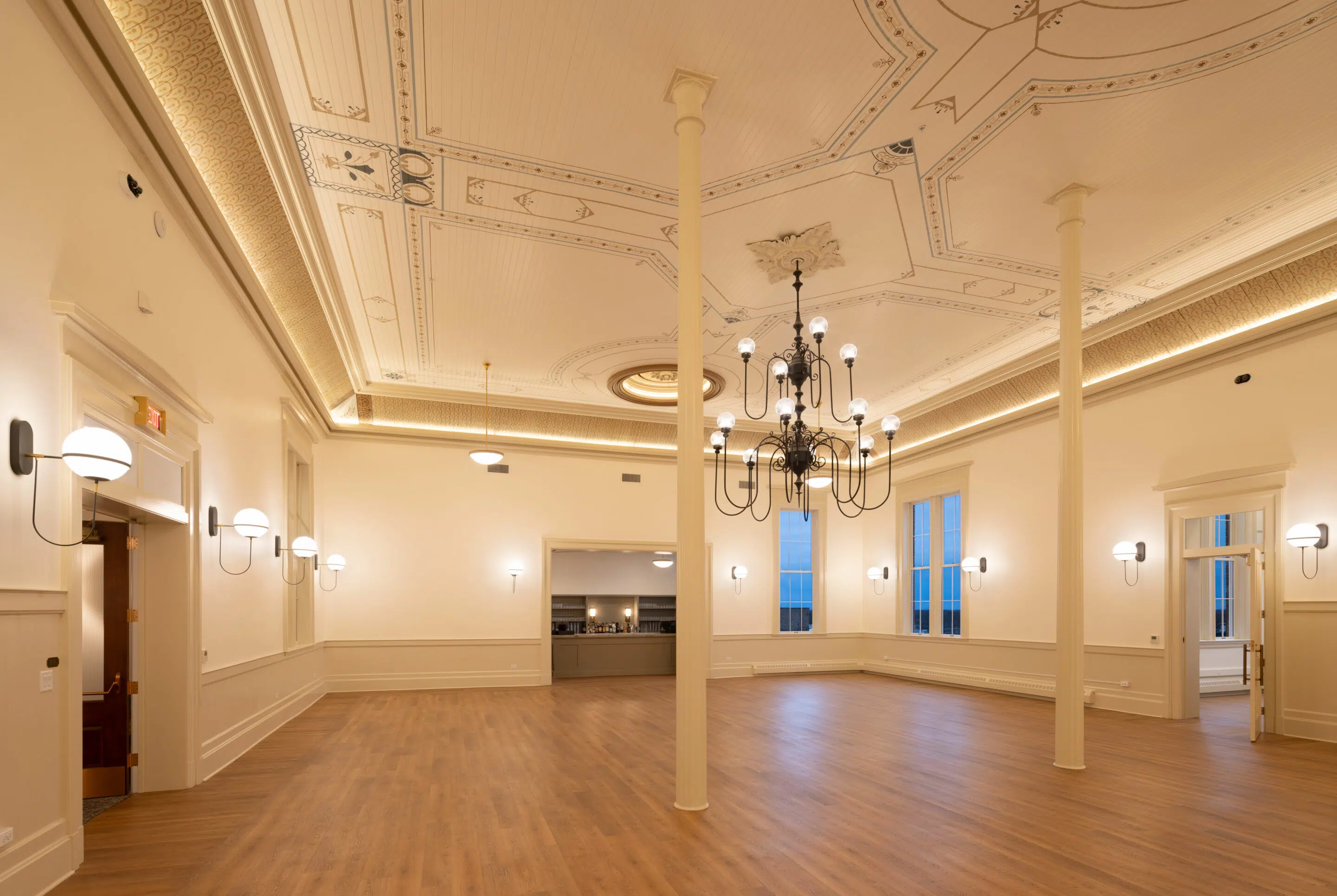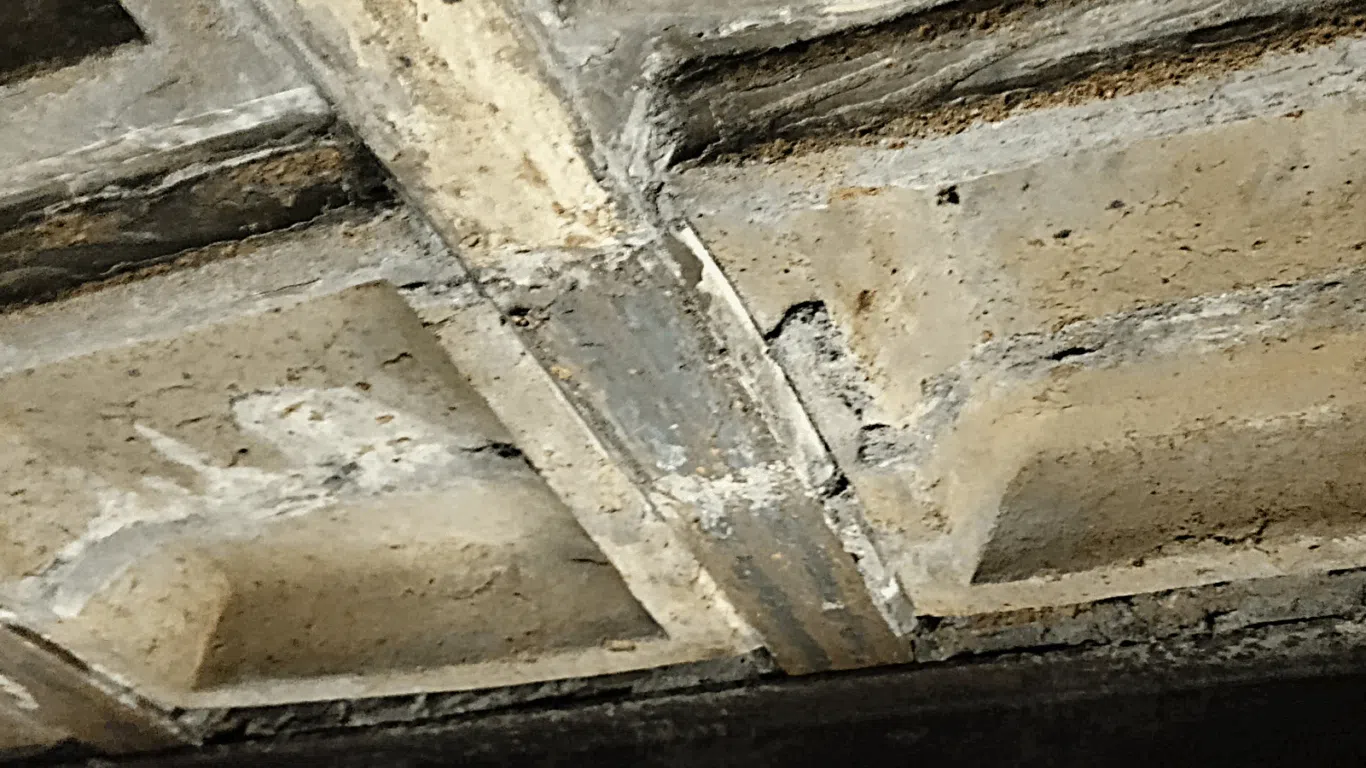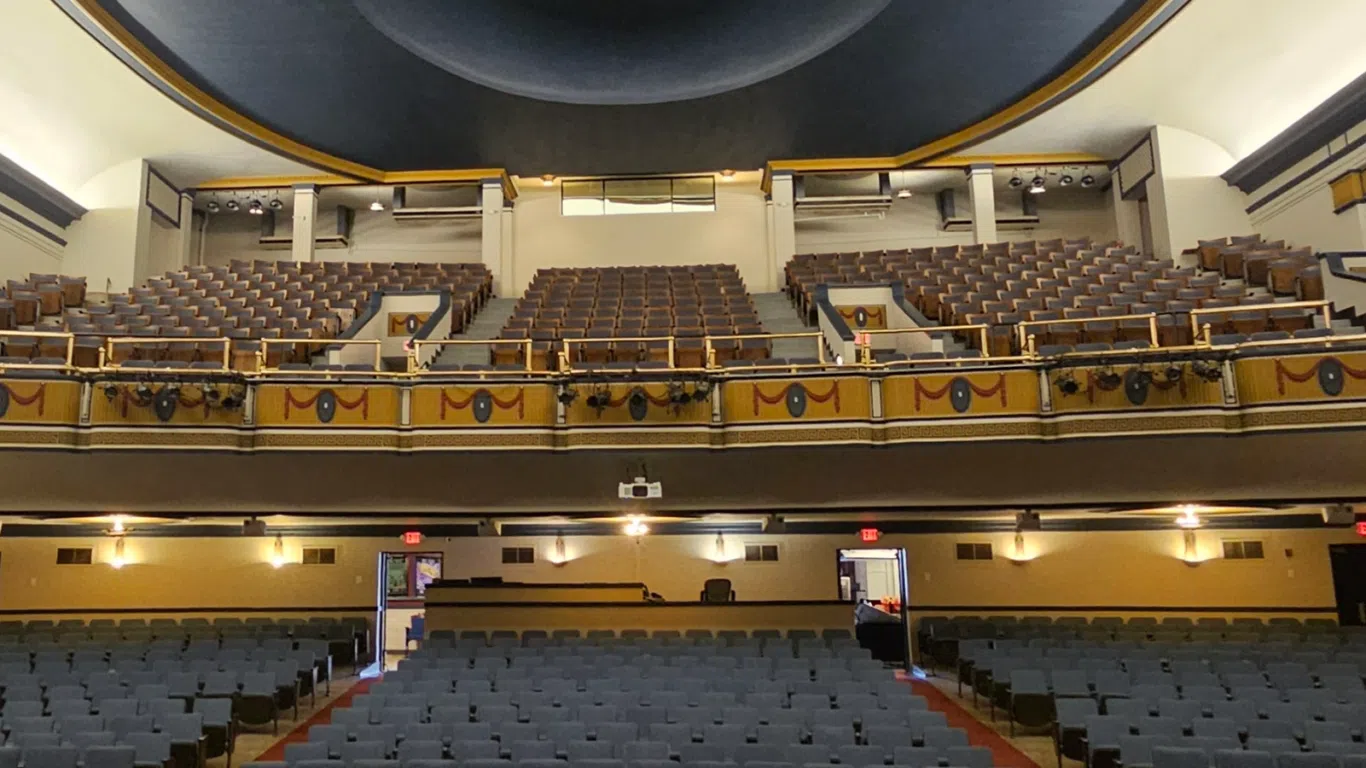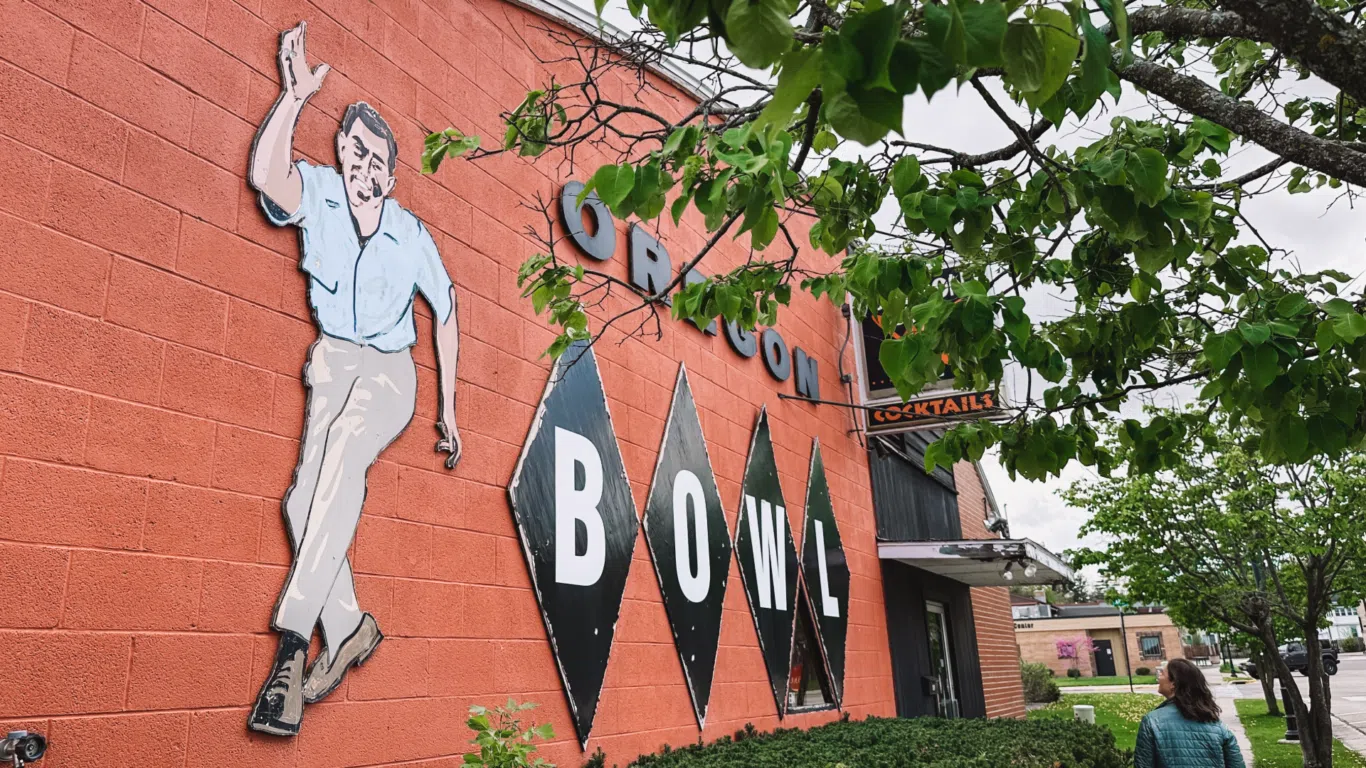By Amanda Viale
Being unfamiliar with the design process can make navigating development confusing. It is crucial for the client and project team to understand roles and deliverables throughout each stage of design. What better way to bridge the knowledge gap than to provide expert insight, translated through a non-design team member lens!
The first thing that we want to understand is that the phases of design begin with very high-level ideas that progress until each minute and specific detail is planned. We have seen client wants ranging from floor hatches to store money all the way to rooftop pools with glass bottoms – these elements of functionality or pleasure are elements that your design team will work to specify as we move throughout the phases of design.
The second thing to note is that while the phases of design are typically linear, there can be overlap between phases and smaller projects do not move through the phases any more quickly than larger projects.
While the phases of design are generally the same no matter the type of project, the phases and deliverables outlined below are most typical of an adaptive reuse project.

As we move from predesign to construction administration, the fine details of the complete project become clearer.
Phase 1: Predesign
As the name suggests, there is no design being completed during the predesign phase, rather, this is the phase where our design team gathers information. Though no design changes will be made, drawing or modeling the existing building structure is imperative. This is also when the design team will gather information about client needs—we love it when excited clients bring us into the vision of their development and trust us to make it happen. Questions we ask clients might include: what is the main goal and uses of the building? What are the necessities to ensure a successful final product? What is your budget and timeline? How do you want the space to feel when it is done and what is important to you? We make sure we understand how spaces need to be laid out and how those spaces will interact.
We also will need to gather site and zoning information for the development area. This might include certain zoning restrictions and identifying parameters of a historic district.
Phase 1.5: Conceptual Design
Dubbed phase 1.5, this phase is where very big picture design discussions begin. Your design team will likely produce bubble diagrams as we seek to understand the space. This is when the design team gets a better understanding of square footage and relationships between spaces within existing buildings. Exact spaces are not defined in this phase.
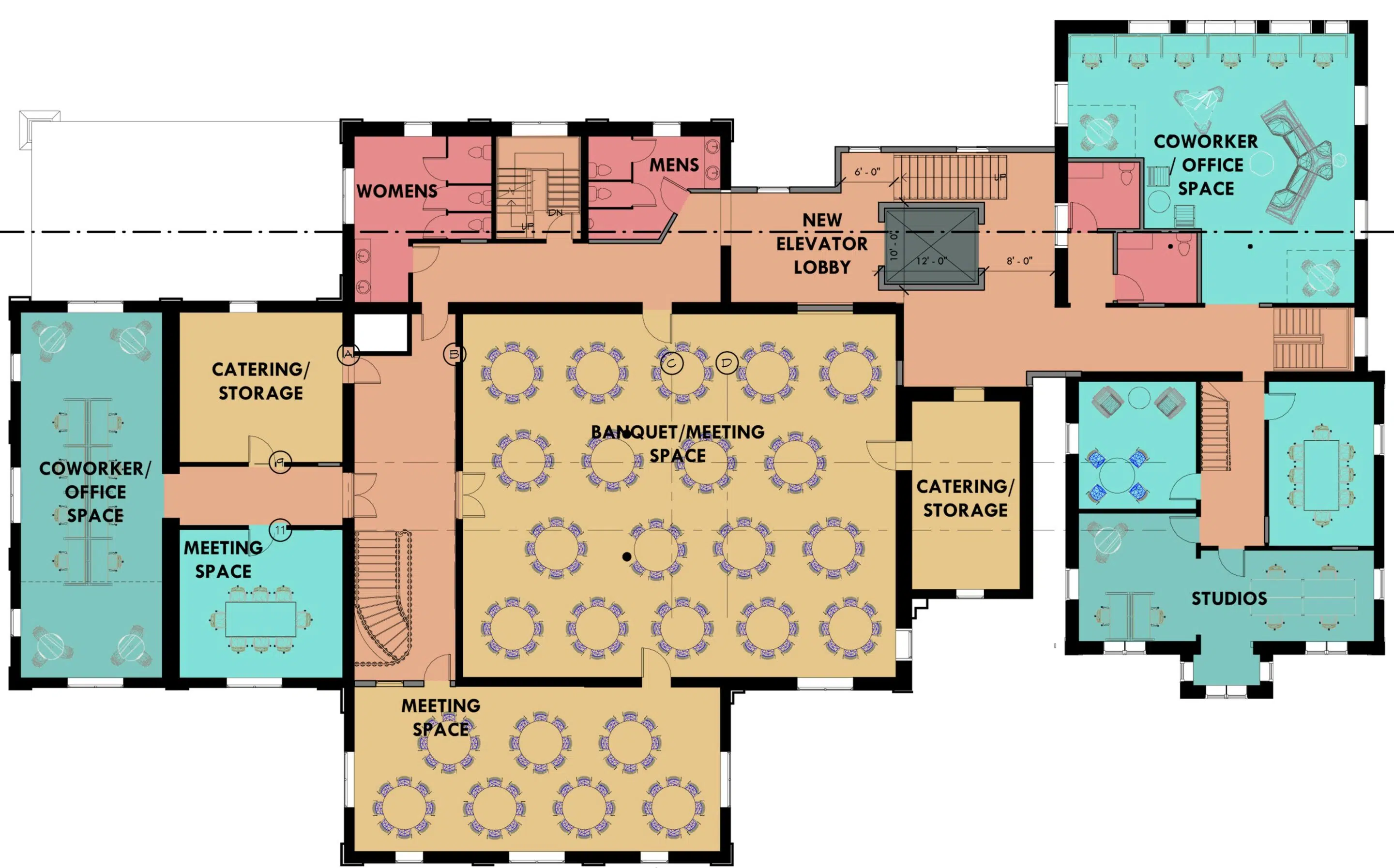
A sample option presented to the client for space programming.
Clients should be prepared to share the atmosphere and goals that you hope to capture in the completed development. With that information, we will put together character imaging—another way to think about character imaging is inspiration photos.
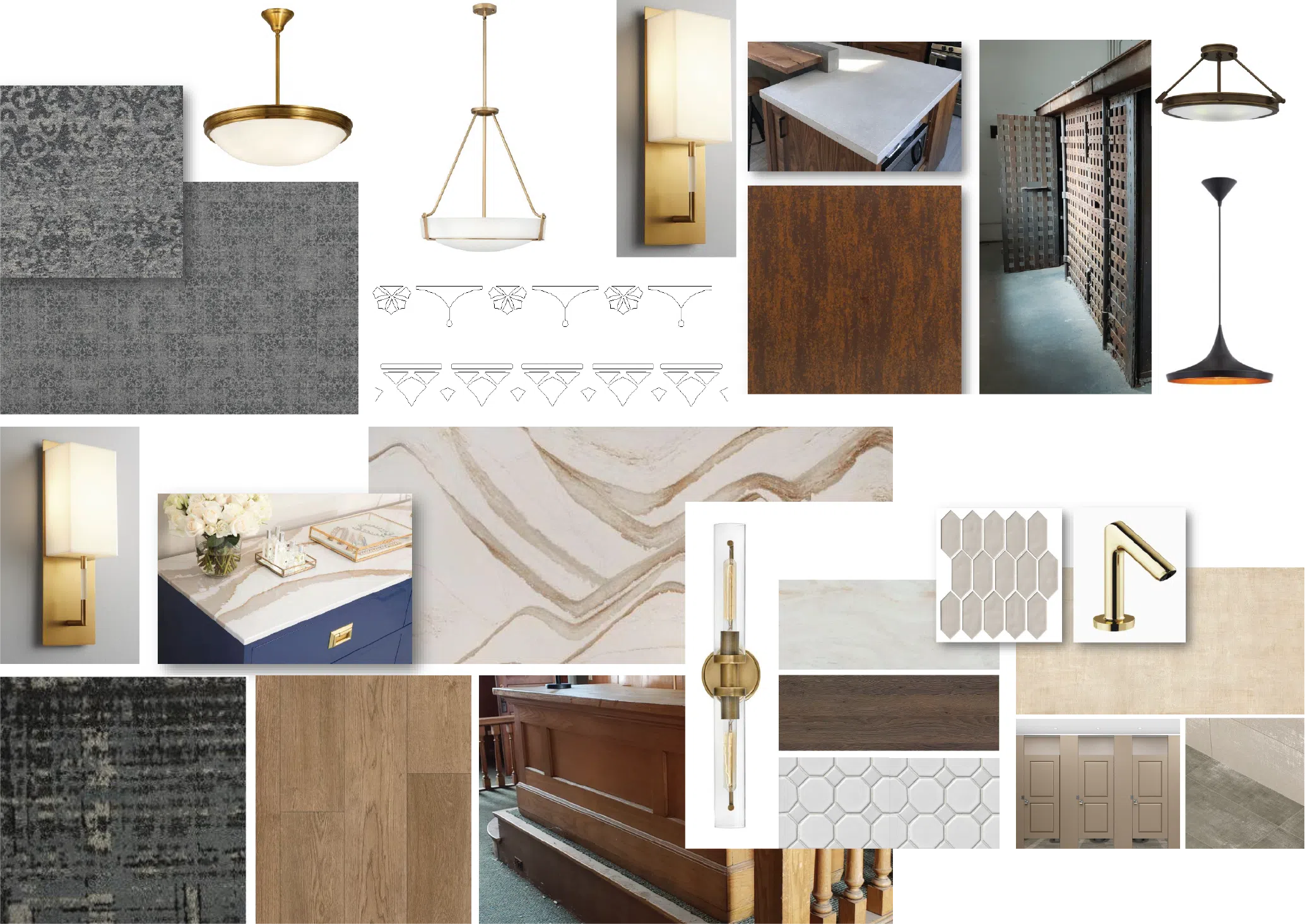
The client described their vision for the space as being bright, inviting, and fresh, while maintaining the character of the building. It was important to the client that the space be neutral so that prospective tenants could easily visualize their company occupying a tenant space.
It is important that the client provides clear feedback as the overall concepts that are generated in this phase are used to create a conceptual budget and prepare for Schematic Design.
Phase 2: Schematic Design
Once programming is done, we move into Schematic Design. In this phase of design, spaces are on the move! Nothing is off the table as your design team looks at elevations, plans, and three-dimensional views of the building. This is the phase where big moves happen – walls, rooms, and spaces are continually being configured and reconfigured. During this phase your design team will also create a written narrative where the final product is described using words. Fixtures may be called out, but no final selections will be made in this phase.
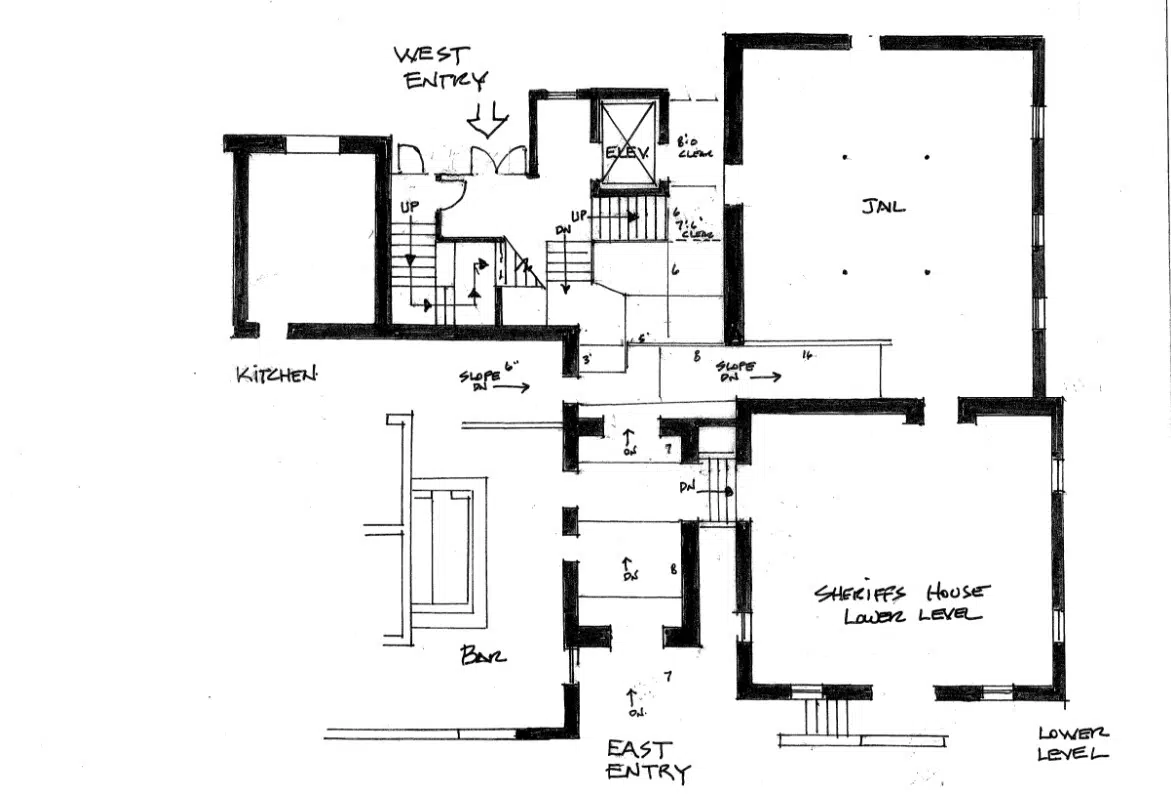
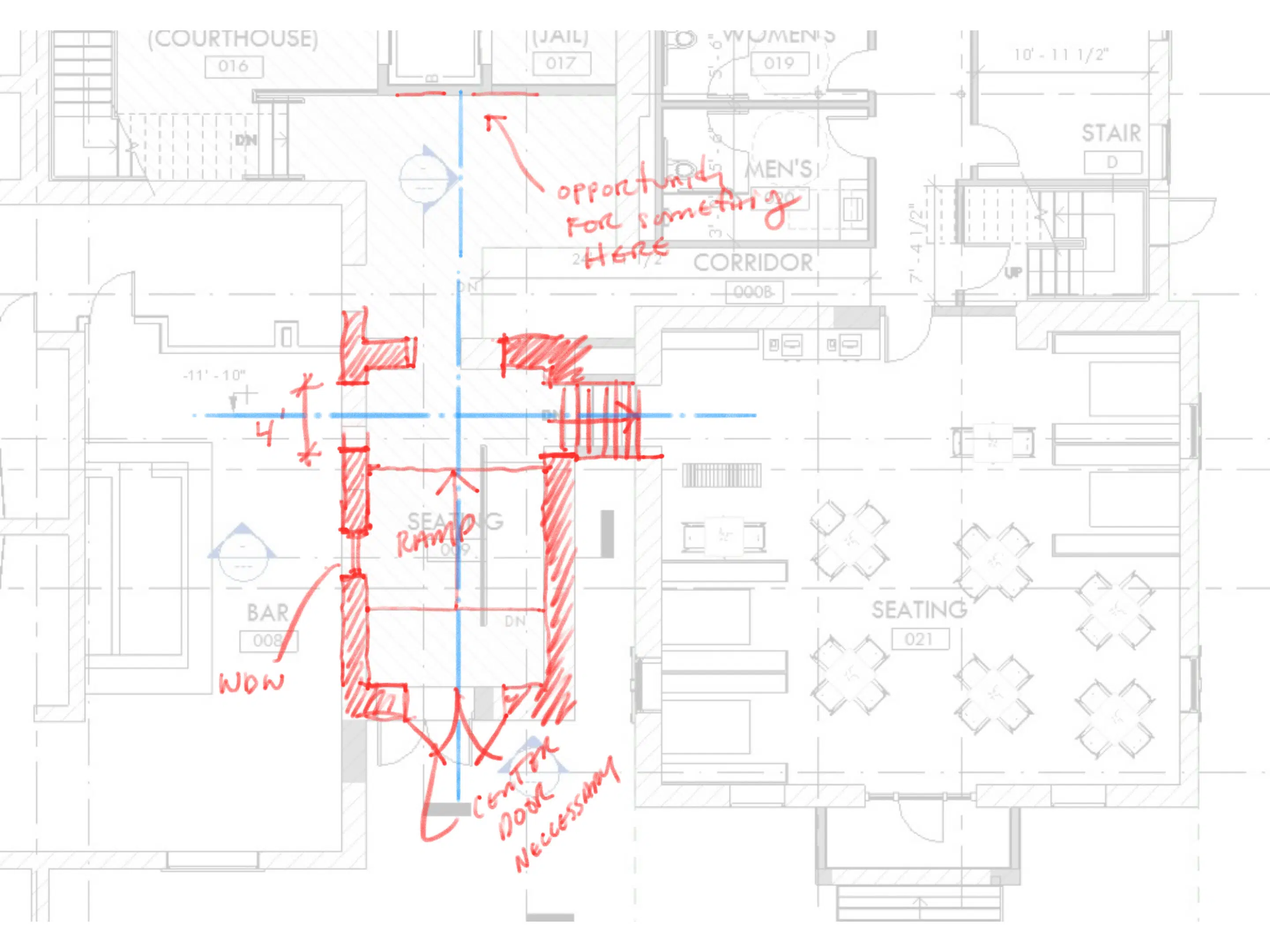
The process of reconfiguring spaces is creative and a bit messy as our designers work to fit the space for longevity and functionality.
Phase 3: Design Development
As we move into Design Development, direction has been narrowed down and smaller details can now be established. Building elements such as windows, doors, and walls may move but only minorly. In this phase, building systems are being considered which requires close coordination with consultants. Consultants are establishing how much space they need for equipment and deciding on path. In this stage, the client needs to provide feedback, make decisions, and ensure timely payment.
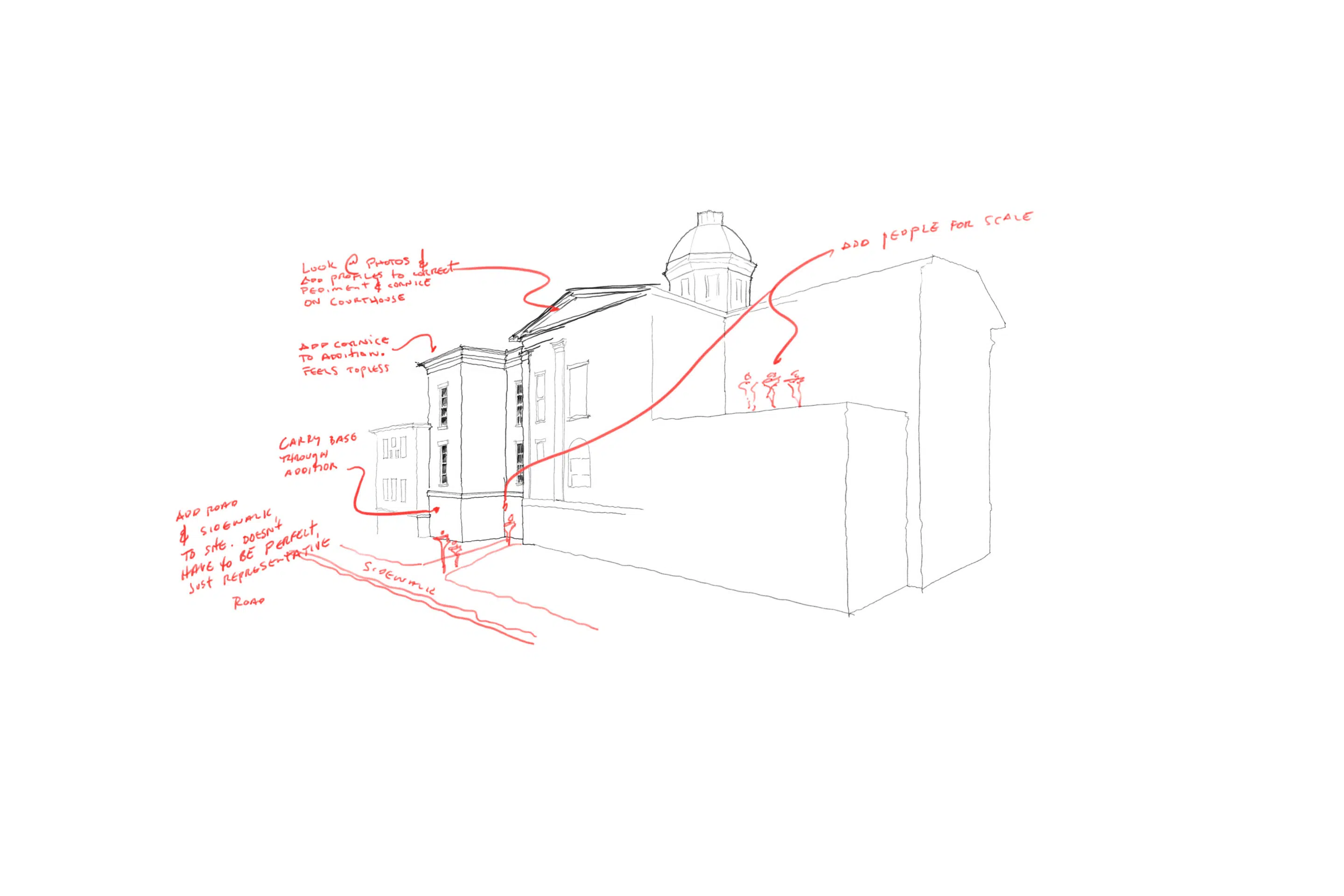
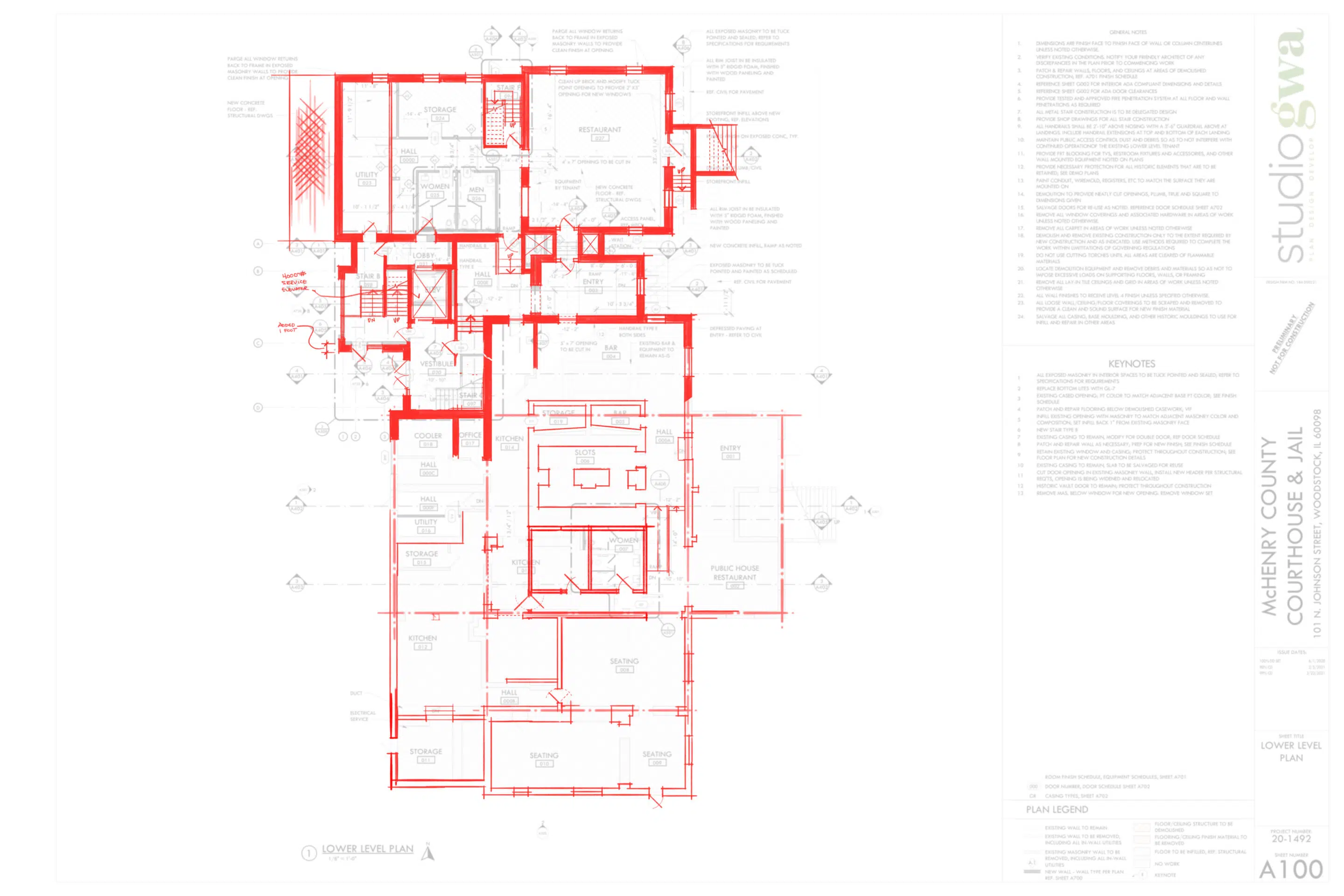
Detailed plans begin to form with specific features and systems being specified.
Phase 4: Construction Documentation
Construction Documentation is when all the details are pulled together into plans that will be used by contractors to construct. As designers, we cannot tell contractors how to complete work, we simply provide what the finished product should include and trust their expertise to build what is specified. Clients should be available for questions and final feedback, but client roles are small during this phase.
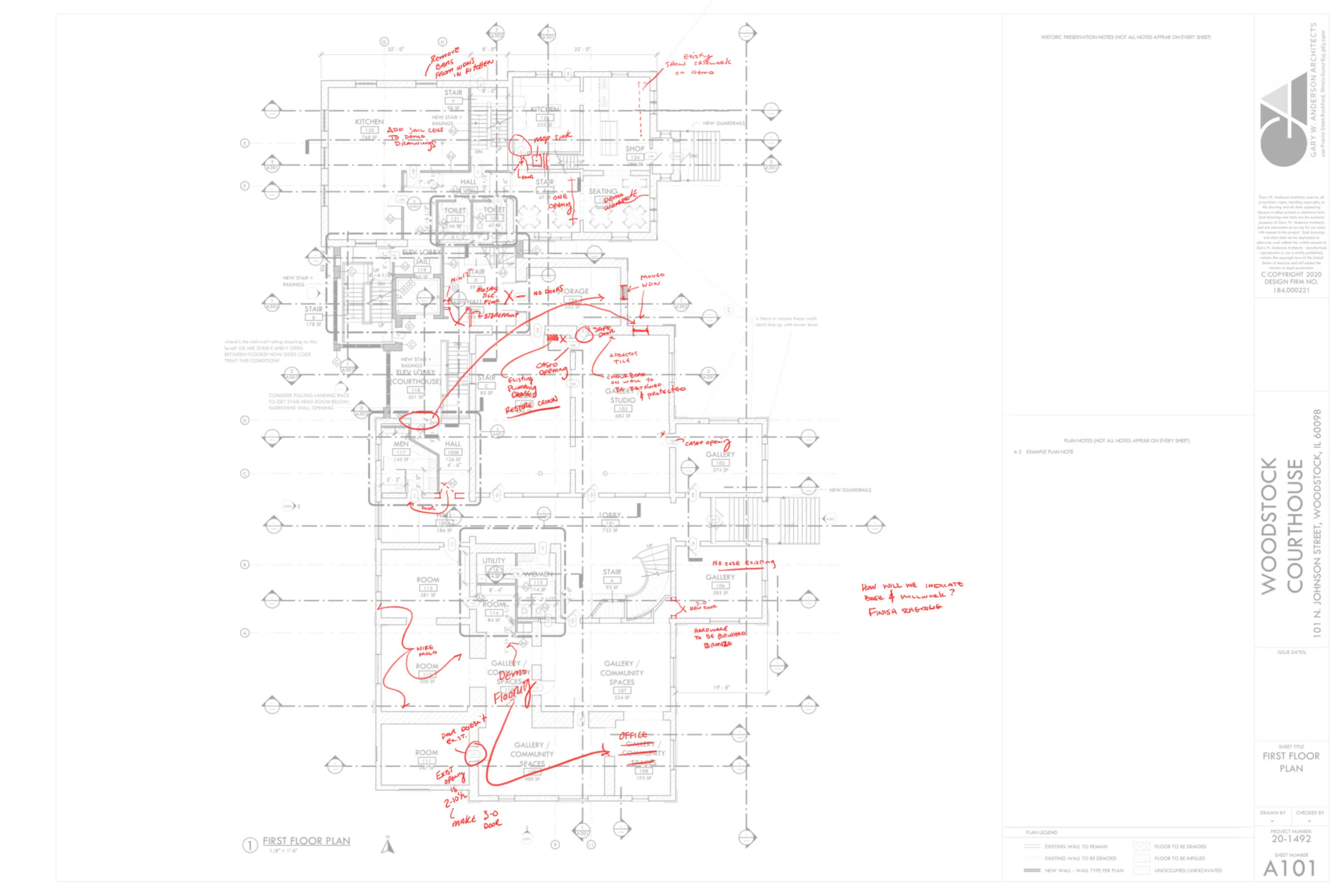
In construction documentation, finished product is specified in great detail so that contractors can bid, and then build the project to match the client vision.
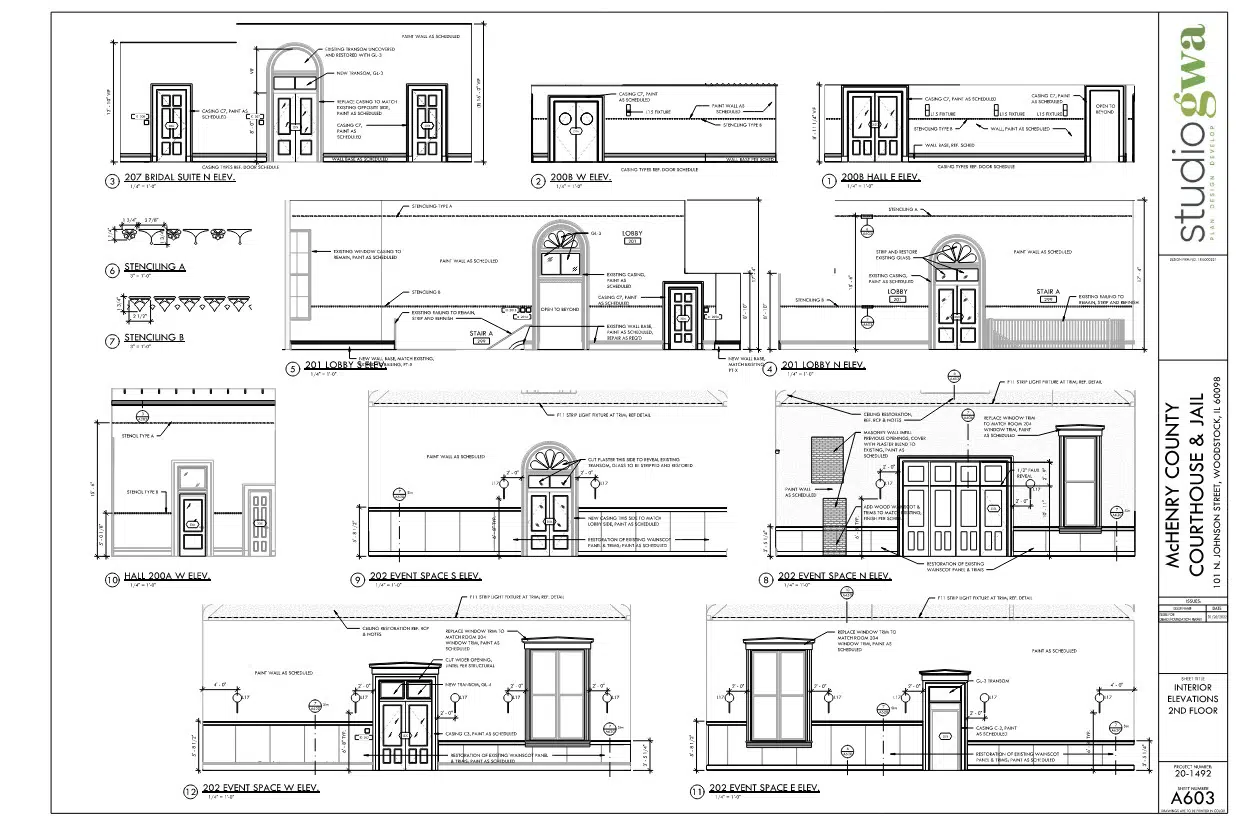
Phase 5: Bidding and Negotiation
In this phase, drawings are sent out to contractors so that they can create cost estimates and place their bids to complete the project. Site visits by the bidders occur during this phase and often your design team answers contractors’ questions and issues addendums when necessary. The design team is also considering alternative options that are proposed by the contractors. Once bids are received, the design team helps our client evaluate bids and provide recommendations. Your design team can also supply contract language between the client and the contractor. The role of the client is to evaluate options and make decisions.
Phase 6: Construction Administration
After the contractor is selected, Construction Administration begins. This phase includes everything from demo and site prep all the way through to construction completion. The design team will be making regular site visits and addressing Requests for Information, (or RFIs) and submittals. RFI’s are requested when the contractor needs clarity on a project detail. Your design team will also handle submittals which are shop drawings that describe how elements are fabricated, such as stairs. Submittals may also be cutsheets for finishes to ensure that what is specified is the same as what is provided. Change orders are managed – which can result in budget change.
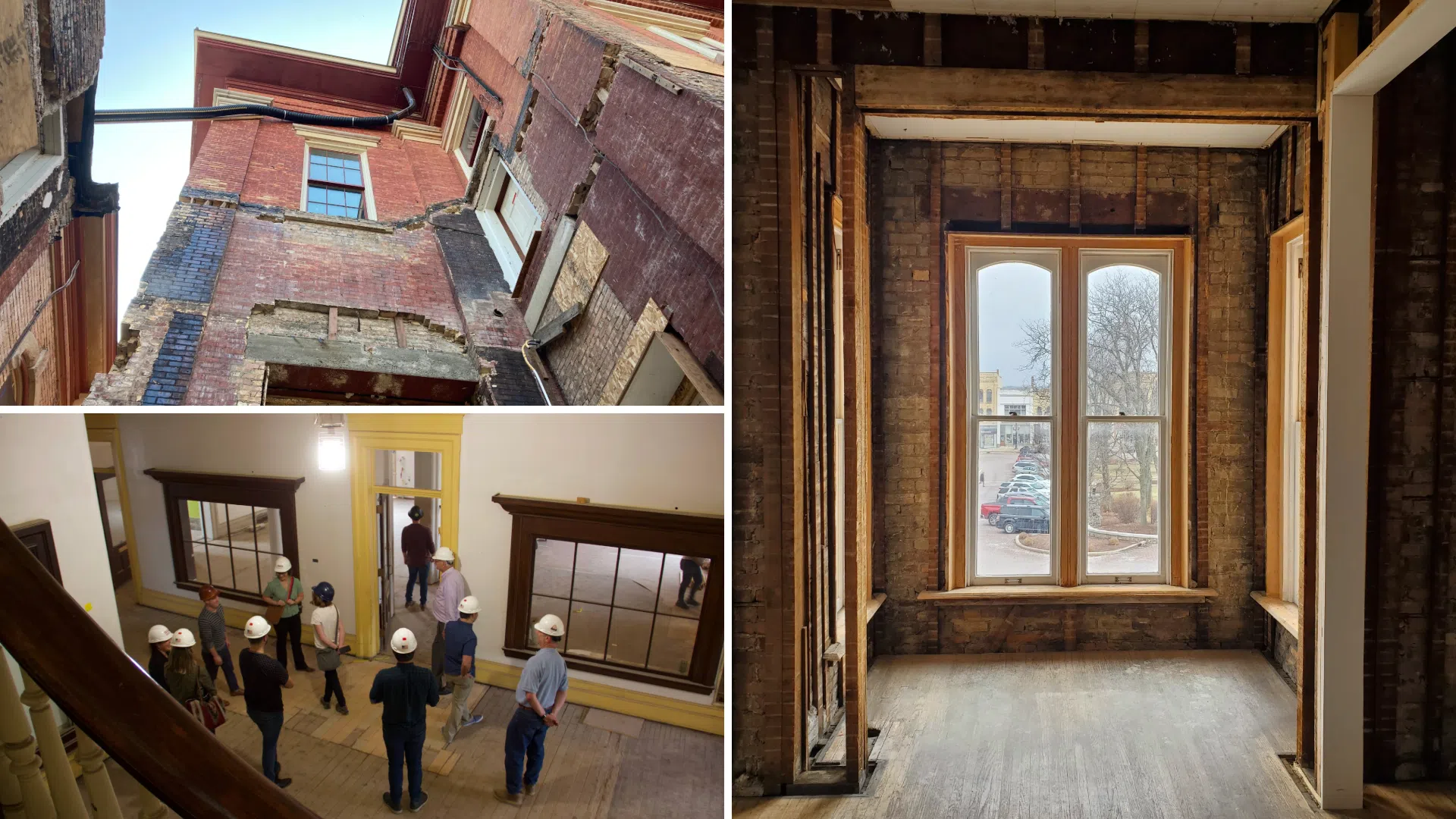
A main client role is attending OACs—Owner, Architect, and Contractor meetings. These weekly meetings provide an opportunity to ask questions, discuss challenges, and ensure that the project team is on the same page as construction progresses.
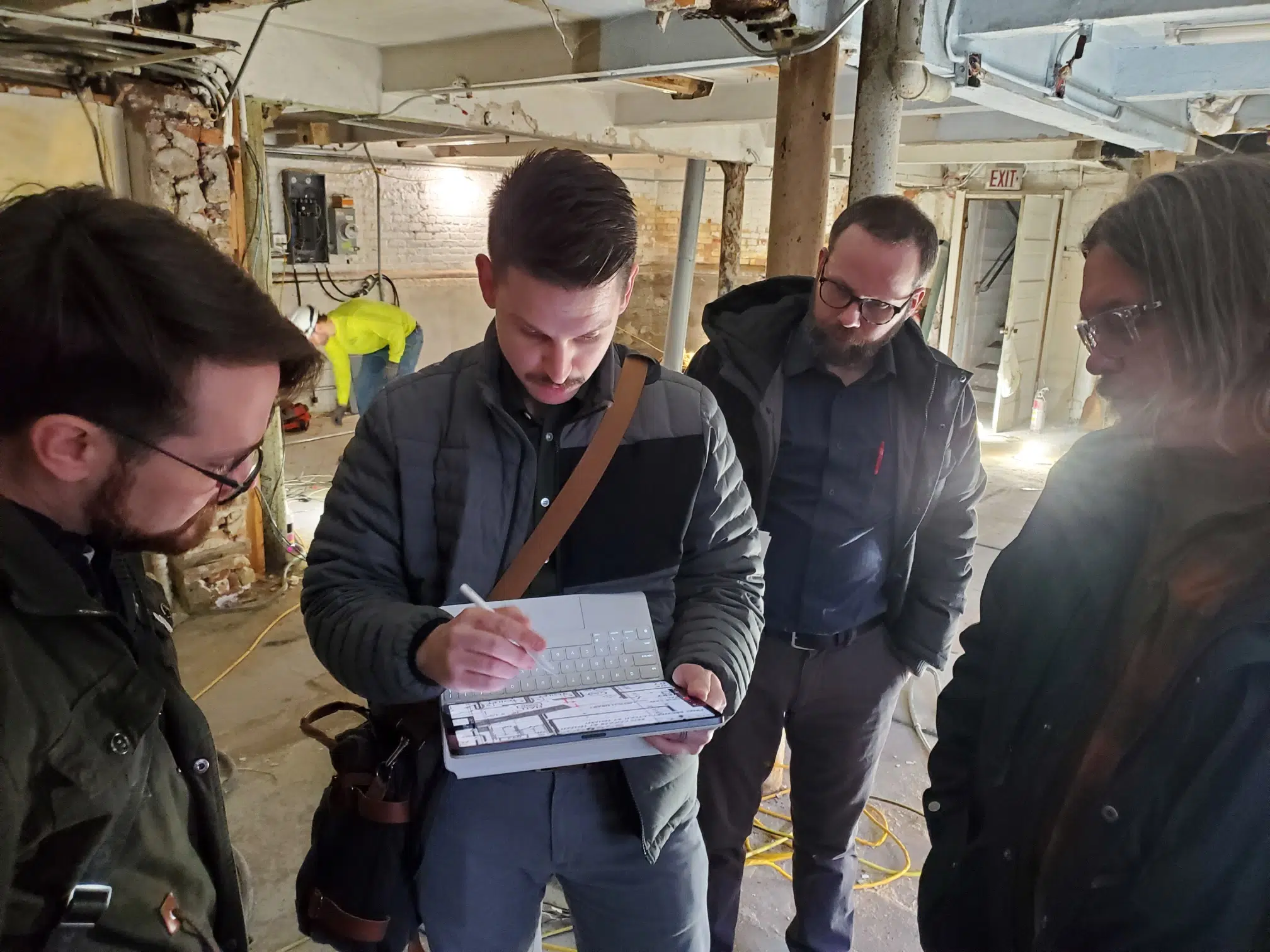
Site visits and meetings occur regularly so that the project team understands how to move forward, and the project stays on track.
Once construction is nearing completion, the design team will complete the punch list. Punch lists give the contractor a list of areas that need to be reviewed and fixed before keys are handed over to the owner.
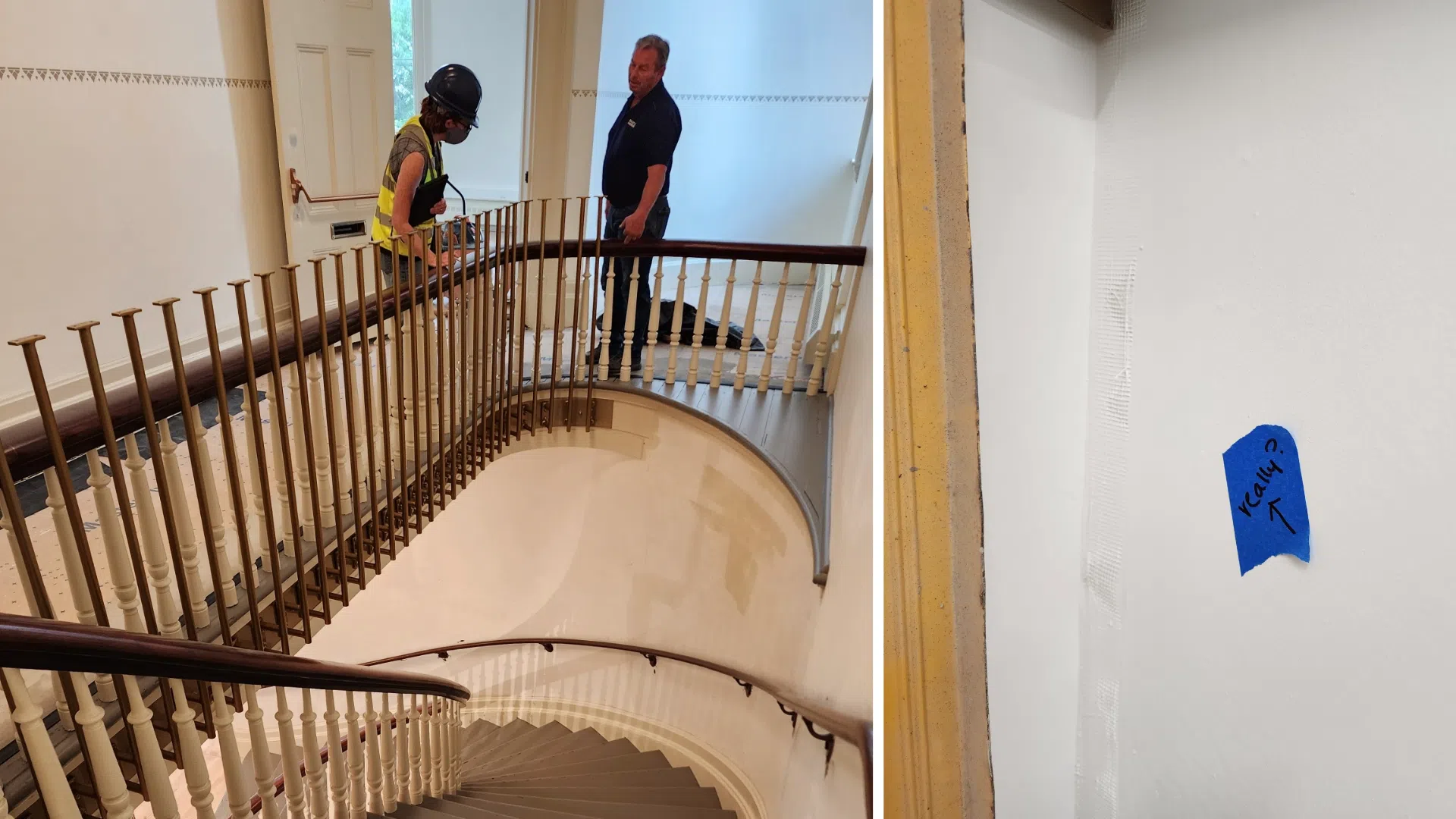
The design team meticulously walks through the building, noting the slightest imperfections that need to be fixed . . . and sometimes we add in a little sass!
We get really excited when Construction Administration comes to a close – not because we don’t love working with our clients, but because this means that dreams have become reality, and a building is ready to be used and enjoyed!
